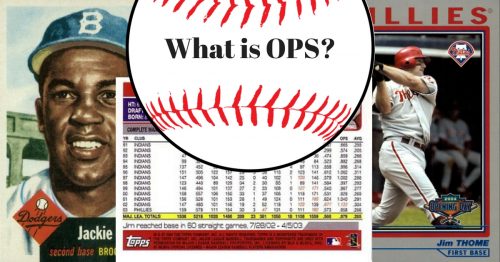Baseball analytics has brought about a multitude of advanced metrics for players and teams to measure performance. One of the most commonly discussed metrics is OPS, which stands for On-base Plus Slugging. OPS is a combination of a player’s on-base percentage and slugging percentage and is used to quantify a player’s overall offensive performance.
As a statistic, it has been gaining in popularity and is used to compare players and evaluate their contribution to a team. This blog post will provide an overview of what OPS is and how it is used in evaluating players and their offensive performance. We will also provide an overview of how OPS has been used to measure the success of entire teams, as well as how it has evolved over the past few years.
By the end of this blog post, the reader should have a better understanding of what OPS means, and how it has become an integral part of baseball analytics.
1. Definition of OPS
OPS, or on-base plus slugging, is a sabermetric statistic used to measure the offensive performance of a baseball player. It is calculated by adding the player’s on-base percentage (OBP) and their slugging percentage (SLG). The formula is OBP + SLG = OPS. This statistic was initially designed to measure a player’s ability to get on base and hit for power. It is a popular stat among baseball analysts and scouts when evaluating a player’s offensive prowess.
2. Components of OPS
OPS stands for On-Base Plus Slugging, and is a statistic used to measure a baseball player’s overall offensive performance. It is calculated by adding a player’s on-base percentage (OBP) to their slugging percentage (SLG). The result of this calculation gives a measure of a player’s ability to generate runs and get on base. OPS is used to compare different players and to evaluate a team’s offensive performance. It is one of the most popular and widely used sabermetric statistics, and is used to identify players who may be undervalued or overvalued by traditional statistics.
3. How it is Used in Baseball
OPS is an acronym for On-base Plus Slugging, and is a statistic used to measure the overall offensive performance of a baseball player. It takes into account the number of times a player gets on base (on-base percentage) and their ability to hit for power (slugging percentage). OPS can be used to compare players from different eras, and between different positions, since it takes into account the overall offensive contribution of the player, rather than just their batting average. OPS is often considered a more comprehensive statistic than traditional batting average, and is used by Major League Baseball teams to evaluate a player’s worth.

4. History of OPS
The term OPS has been used in baseball since at least the 1970s and stands for “On-base Plus Slugging.” It was popularized in the 1980s when it was included in the annual baseball almanac published by STATS, Inc. The statistic is a combination of a player’s on-base percentage and slugging percentage, which are both measures of a player’s offensive performance. Since then, OPS has become one of the most-used stats in the game, with many analysts using it as a measure of a player’s overall offensive value. OPS is still widely used today, as it offers a good linear approximation of a player’s total offensive value.
5. How to Improve OPS
On-base plus slugging (OPS) is one of the most important statistics in baseball as it measures a player’s offensive ability. It is calculated by adding a player’s on-base percentage and their slugging percentage. A high OPS indicates a player who is able to get on base often and hit for power. Here are some ways to improve a player’s OPS:
1. Increase the amount of walks taken. This will increase a player’s on-base percentage and lead to more runs scored.
2. Focus on hitting line drives and avoiding groundballs and pop-ups. Line drives have the highest probability of being hits and can lead to extra bases.
3. Work on hitting the ball to all fields. By distributing hits to all fields, a hitter can increase their chances of getting base hits, leading to a higher batting average.
4. Increase power by working on the lower body and developing a strong core. Strong legs and a powerful core will enable a hitter to generate more power and thus, hit more home runs.
5. Practice proper plate discipline. By taking pitches and swinging at strikes, a hitter can increase their
Summary
To sum up, OPS is an important statistic in baseball as it provides a measure of a player’s overall offensive production. It is calculated by adding a player’s on-base percentage and their slugging percentage. While it does not account for factors such as baserunning, OPS can still help teams identify players who will bring value to their roster. Ultimately, OPS is an effective metric for understanding a player’s offensive abilities and their potential impact in the game.




